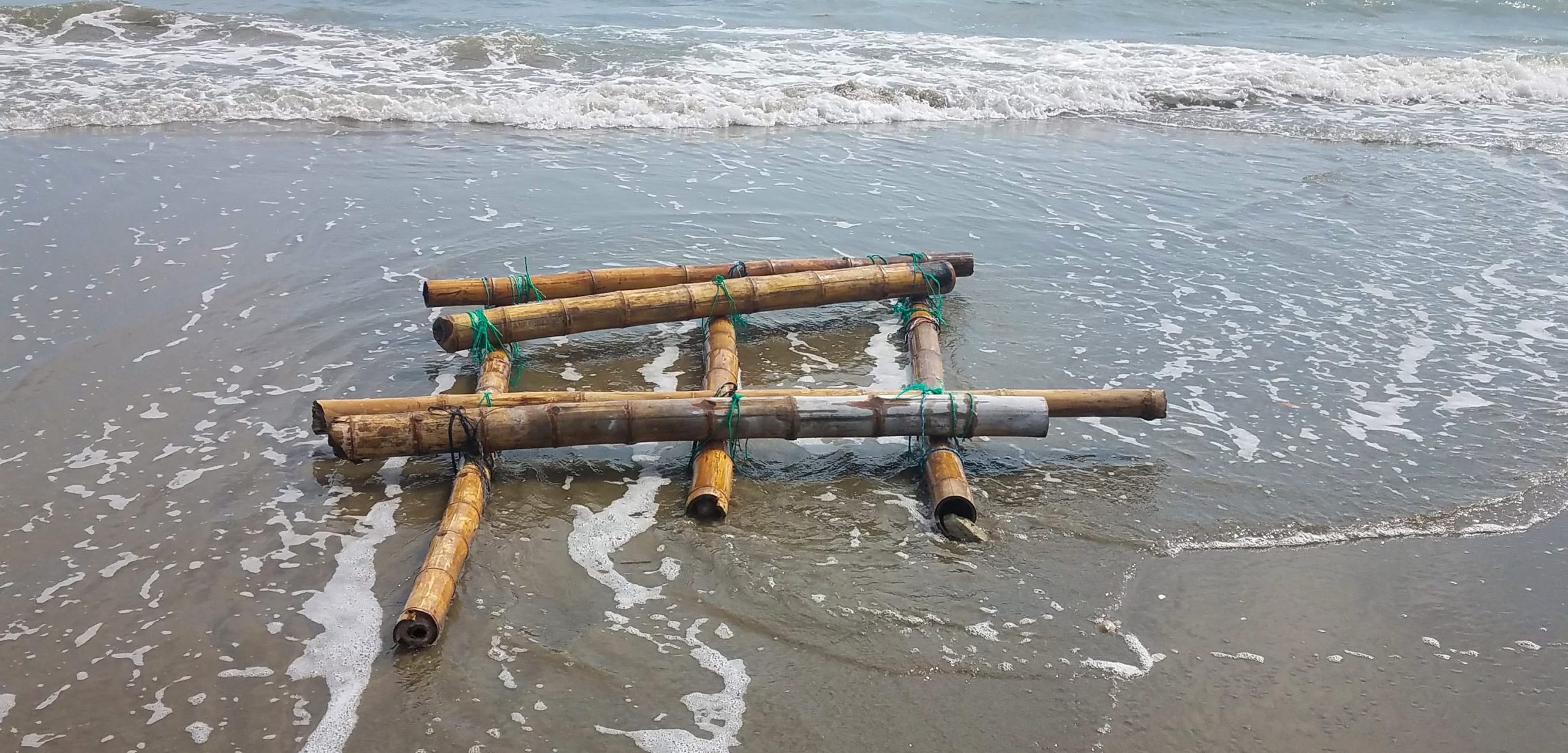Baiting and Abetting
Scientists have found dozens of marine mammals firmly tied to fish aggregators in Ecuador, suggesting fishers are using the animals as bait.
Article body copy
Along the Ecuadorian coast, dolphins, whales, and sea lions are washing ashore ensnared in makeshift bundles of wood and bamboo. Similar rigs, lashed together with rope and netting and designed to attract tuna and dorado, routinely claim sea turtles, sharks, and other marine life as by-catch. So when Juan José Alava, a conservation biologist at the University of British Columbia, learned that the beached structures had started appearing alongside the bones and sunburnt carcasses of marine mammals, he assumed they were just the latest accidental victims. But as he and other researchers took a closer look, they realized the animals couldn’t possibly have been the victims of by-catch: nylon rope, looped and tied around their fins, tailstocks, and torsos, was firmly affixing them to the rigs.
This and other signs led Alava to suspect that Ecuador’s artisanal fishers are baiting their fishing rigs with marine mammals.
Alava and his colleagues were keyed in to the activity by park rangers, tourists, and locals, as well as scientists with the Ecuadorian arm of the Pacific Whale Foundation, which collects data on animal strandings. The researchers focused only on the strandings that indicated human handling—knotted rope, or cut marks on the animals—or strandings that were found alongside the makeshift fishing rigs, otherwise known as fish aggregating devices (FADs). Of the 168 marine mammals found dead on Ecuadorian beaches between 2001 and 2017 near the Gulf of Guayaquil, close to the country’s border with Peru, nearly 20 percent were found either directly attached to a FAD or neatly wrapped in netting, lines, or buoys.
Though the researchers found a few small cetaceans—one case each of a spotted dolphin, a short-finned pilot whale, and a pygmy killer whale—they overwhelmingly found South American sea lions.
From interviewing local artisanal fishers, Alava and his colleagues learned that Peruvian fishers may be deliberately targeting and hunting sea lions with the purpose of selling them to Ecuadorian fishers. A sea lion fetches between US $70 and $100—an investment these fishers are willing to make knowing that the fatty, long-lasting bait is effective at attracting pelagic fish, Alava says. For the Peruvian fishers, he adds, that profit is considerable.
“I would call it a black trade at sea, where no one can see what is happening,” says Alava.
However, Jeffrey Mangel, a biologist and scientific director of the Peru-based nonprofit Pro Delphinus, is skeptical of this claim. Rather than hunting the sea lions, Mangel says it’s likelier that Peruvian fishers are obtaining the animals as by-catch and then selling them to Ecuadorian fishers. Peruvian fishers, particularly in the artisanal gill net and longline fisheries, have a history of using marine mammals as bait. “It’s free and it’s effective,” Mangel says. “That’s one of the things that makes it so difficult to control.”
Fishers commonly view sea lions as competitors, Mangel adds, as both target the same fish species. Pinnipeds frequently interact with fishing vessels, and sometimes damage fishing gear in the process.
“Some fishers are very happy to kill a sea lion if they come across it,” Mangel says.
The practice of using marine mammals as bait is emerging in Ecuador, but it is not a new phenomenon. Since at least the 1970s, scientists have found evidence of fishers baiting longlines, gill nets, and traps with marine mammals, particularly in Asia and Latin America.
Because it’s illegal to hunt marine mammals in many countries, the practice exists underground. “It’s clandestine in nature,” says Vanessa Mintzer, a conservation ecologist who studies the phenomenon as it relates to dolphins through her business, Wildlife Research Partnerships, and was not involved in the research. She likens the practice to the global bushmeat trade, which similarly threatens large and iconic mammals that are vulnerable to extinction, such as tigers and chimpanzees, and often occurs in countries lacking strong law enforcement.
Although South American sea lions are not considered threatened, other marine mammals are under pressure from fisheries and climate change. Mangel says campaigns to raise awareness about these concerns should be made in communities that depend on fishing. Governments should explore alternative baits as well, he adds.
Curtailing this practice, Alava says, “needs to be done from a bottom-up policy approach” that involves artisanal fishers, who would be most impacted by any change in enforcement. Action needs to be taken, he says, before the toll on marine mammals grows dire.

